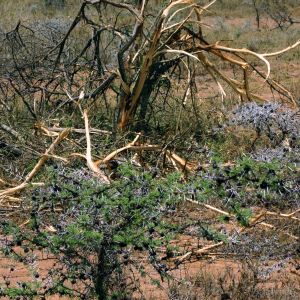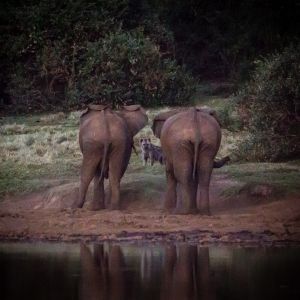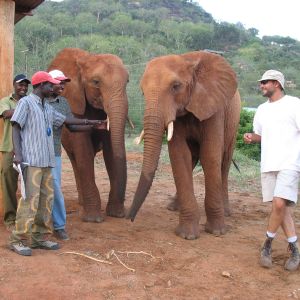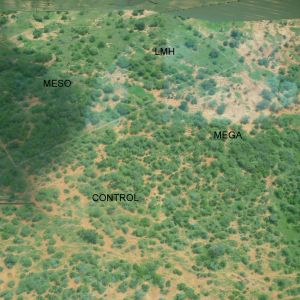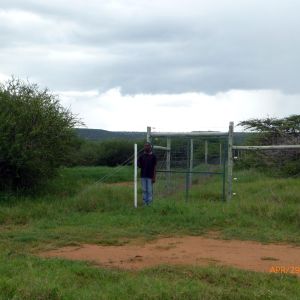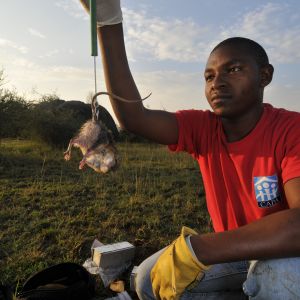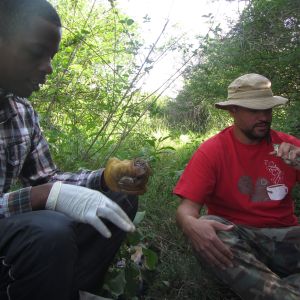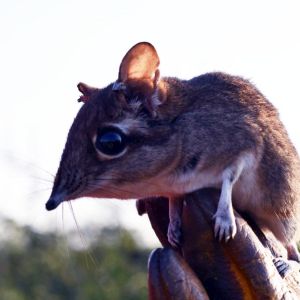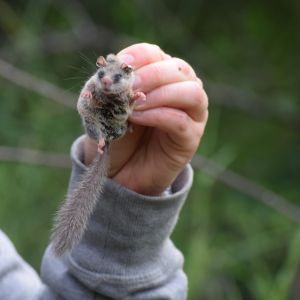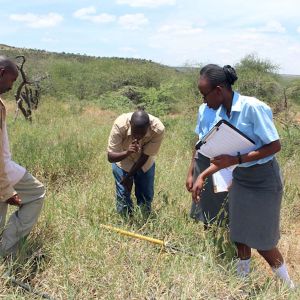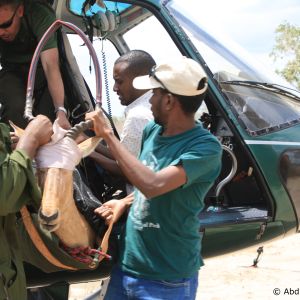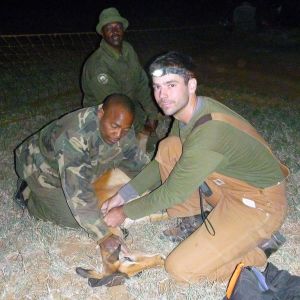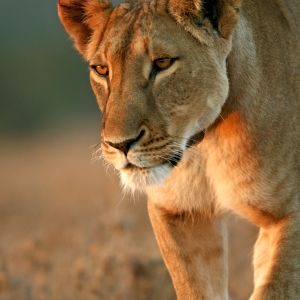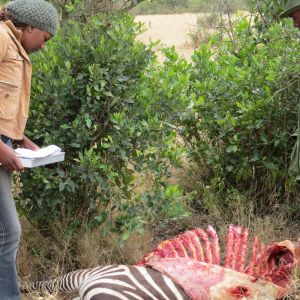Research
Megaherbivory, plant defenses, and landscape change in savanna ecosystems
Elephants and other large ungulates are important agents of mortality for savanna trees, and browsing maintains the tree-grass codominance typifying savannas. However, plant defenses may buffer against browsing as a driver of tree population dynamics. We have combined time series of satellite images, free-choice feeding experiments, and long-term monitoring of tree growth to show that abundances of a myrmecophyte (Acacia drepanolobium) are decoupled from variation in elephant populations over a six-year period. Other acacia that are not protected by ant symbionts decline following increases in elephant numbers through time. Recently, the spread of an invasive ant (Pheidole megacephala) has disrupted the ant-acacia mutualism, with cascading effects for predator-prey dynamics.
Current collaborators: Douglas Kamaru, Pat Milligan, Todd Palmer, Corinna Riginos
Diet generalism, dispersal, and abundance-occupancy relationships
Interaction webs are pervasive features of ecological systems, and studies of these systems often attempt to reduce nature to pairs or subsets of species. However, the contextual nature of interaction webs merits closer inspection if we are to generate a mechanistic understanding of when and where the loss of species is likely to have consequences for community structure and ecosystem function in a world of increasing environmental change. Established in 2008 with colleagues Rob Pringle and Todd Palmer, the Ungulate Herbivory Under Rainfall Uncertainty (UHURU; the Kiswahili word for "freedom") experiment is unique both in size and in scope. Using a series of 36 1-ha plots situated across a pronounced rainfall gradient, UHURU differentially excludes or permits access by various combinations of wild herbivores to mimic extinction and climate change scenarios in East Africa. Through UHURU, we are trying to address a number of questions in community ecology, including functional redundancy among mammalian grazers, effects of extinction on ecosystem processes (e.g., nutrient cycling, soil-water infiltration), and the extent to which herbivory can stabilize productivity under different levels of anthropogenic disturbance.
Current collaborators: Jesse Alston, Allison Louthan, Todd Palmer, Rob Pringle,
Megaherbivory, plant defenses, and landscape change in savanna ecosystems
Abundance-occupancy relationships are among the most pervasive patterns in community ecology, with species tending to be locally abundant and widespread, or rare with restricted distributions. The mechanisms underlying this pattern are rooted in long-standing debates over the relative importance of niche- versus dispersal-assembly. Using a species-rich guild of small, herbivorous mammals, we are testing the hypothesis that abundant, widespread species are ecological generalists, capable of persisting on a variety of foods. In contrast, rare, restricted species may be ecological specialists, highly selective in their diets and habitats.
Current collaborators: Tyler Kartzinel, Leo Khasoha, Jessi Rick, Katie Wagner
Trophic dynamics in mammal-dominated ecosystems
By consuming herbivores, carnivores have the potential to bolster the abundance and diversity of plants via trophic cascades. Due largely to highly publicized work in North America involving wolves, elk, and trees, trophic cascades have captured the attention of ecologists and the general public alike. Although the hypothesis of trophic cascades makes good sense, we lack a broader knowledge of if and how they work in other ecosystems, and how human activities such as livestock production and predator control might affect them.
Current collaborators: Annabella Helman, Dedan Ngatia, Rosie Woodroffe


